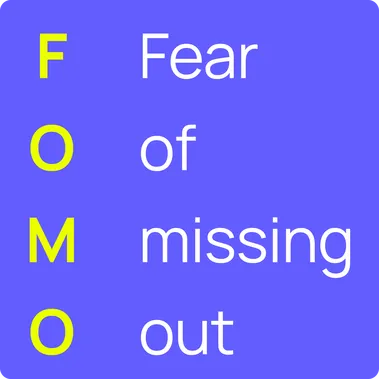User Psychology in Digital Product Design: How it Increases Purchase Intent.
Psychology plays a central role in the design of digital products. It's not just about creating appealing and functional products, but also about understanding and utilising the needs and behavioural patterns of users to increase their willingness to purchase.

In this blog, you'll learn how to apply the principles of user psychology in digital product design to improve conversion rates and customer satisfaction.
What is User Psychology?
User psychology is the study of the behaviour, needs, and motivation of users in the context of using digital products. It helps designers and developers create products that are not only functional and aesthetically pleasing but also intuitive and user-friendly. This involves understanding cognitive processes, emotional reactions, and social influences that affect user behaviour.
The Importance of User Psychology in Digital Product Design
Integrating user psychology into the design process can make the difference between an average and an outstanding product. It influences how users interact with the product, how they make decisions, and ultimately, whether they make a purchase or not. By understanding and applying psychological principles, designers can ensure that their products are not only appealing but also effective.
Foundations of User Psychology
Reducing Cognitive Load
One of the basic rules of user psychology is the minimisation of cognitive load. When a user visits a website or app, they should be able to navigate intuitively and without much effort. A clear structure, simple navigation, and consistent design elements are crucial. This can be achieved through the use of familiar symbols, clear calls to action, and a logical information hierarchy.

Symbols like the hamburger menu or the search icon are widely used and intuitively recognised. Using such familiar symbols helps to simplify navigation and reduce cognitive load. Clear calls to action (CTAs) such as "Buy now" or "Learn more" should also be concise and easy to find.
Perception and Attention
A well-structured information hierarchy ensures that important information is easily found. Use visual hierarchies to guide users' gaze and ensure they see the most important information immediately. A clear visual structure helps to improve user navigation and optimise the overall user experience. Large, eye-catching buttons and contrasts help to highlight important actions and increase the conversion rate. For example, colours and size differences can be used to differentiate primary calls to action from secondary ones. Colours and Contrasts are powerful tools to direct users' attention. Primary calls to action should stand out clearly from other elements. A bright, high-contrast design can highlight key areas and encourage users to perform the desired actions. By using different font sizes, colours, and layouts, you can create a visual hierarchy that helps users navigate your website or app.
Evoking Emotional Reactions
Emotions play a crucial role in purchasing decisions. An appealing design that evokes positive emotions can significantly increase user engagement and purchase readiness. This can be achieved by using colours, images, and fonts that evoke positive associations.
Colours have strong emotional effects. For example, blue conveys trust and security, while red often signals urgency and passion. Images of happy people or inspiring scenes can evoke positive feelings and strengthen the bond with the product. Stories and personal testimonials can provoke strong emotional reactions and gain users' trust. Use testimonials from satisfied customers to highlight the benefits of your product and create an emotional connection.
Practical Application of User Psychology in the Design Process
Persona Development
Create detailed personas of your target audience. These fictional characters represent typical users and help you better understand and address their needs and behaviours. A persona can include demographic information, goals, motivations, and challenges. This information helps you tailor the design to your users' specific needs. Personas should be based on real data and insights. Conduct surveys and interviews to gain a deep understanding of your target audience. Use this information to create realistic and detailed personas that serve as a guide for design decisions.
User Journey Mapping
Sketch the User Journey to identify all the interaction points your users have with your product. This helps you recognise and eliminate potential obstacles to ensure a smooth experience. A detailed User Journey Map shows all the steps a user takes – from the first interaction to completing a purchase. Analyse how the touchpoints can be improved to provide a seamless and satisfying experience. This may include browsing the website, reading product information, and the checkout process.
A/B Testing
Use A/B Testing to compare different design elements and see which version achieves the highest conversion rate. This is an effective method to make data-driven decisions and continuously optimise the design. By testing variations, you can find out which elements your users prefer and which changes yield the best results. Define clear goals for your A/B tests and ensure the variants tested are significantly different. Analyse the results carefully to understand which changes have the greatest impact. Use these insights to continuously make improvements and optimise the design.
Key Psychological Principles and Their Application
Principle of Social Proof
People like to follow the actions of others. Use customer reviews, testimonials, and social proof to gain users' trust and increase their willingness to buy. For example, show reviews from satisfied customers or certificates and awards to enhance the credibility of your product.
Scarcity Effect
The fear of missing out (FOMO) can be a powerful motivator. Limited offers, time-limited discounts, and exclusive products can increase urgency and prompt immediate purchase. By presenting the availability of a product as limited, you create an urge to act quickly before the offer disappears. "Only a few left" or "Offer ends in 24 hours" are examples of effective scarcity tactics that encourage users to act fast.

Consistency and Commitment
Once users have made a small commitment, they are more likely to take bigger steps. For example, offer free trials or sample subscriptions to engage users and increase their likelihood of making a purchase. Once they have had a taste of your product, they want to remain consistent and are more inclined to complete a purchase. Small steps with low barriers can build a relationship and increase the probability of a purchase.
Design for Trust and Credibility
Transparency and Honesty
Be transparent about prices, delivery times, and product details. Honesty fosters trust and reduces the likelihood of purchase abandonment. Users appreciate clear and open communication and are more willing to trust a company that is honest about its offerings. Provide all relevant information clearly and concisely. Avoid hidden fees and unexpected costs that could undermine users' trust. Clear and understandable information about products and services promotes trust and satisfaction among users.
Professional Design
A professional and appealing design conveys credibility. Invest in high-quality graphics, clear typography, and a consistent colour scheme to win users' trust. A professional design shows that you take your product seriously and are willing to invest in quality. A thoughtful and well-executed design demonstrates to users that you have invested in your product and take it seriously. Pay attention to details such as clear typography, high-quality images, and a consistent colour language to leave a professional and trustworthy impression.
Optimising the Checkout Process
Simplicity is Key
A complicated checkout process can deter users. Keep the process as simple and straightforward as possible to minimise purchase abandonments. Reduce the number of steps required to complete a purchase and ensure that users can easily find all necessary information. Use progress indicators to show users how far they have progressed through the checkout process. Offer guest checkout options to avoid the need for registration. Ensure that forms are simple and straightforward, asking only for essential information.
Trust Seals and Security Measures
Display trust seals and emphasise the security of your payment processing to strengthen users' trust and increase their willingness to purchase. Certificates from recognised security providers and transparent privacy policies can help improve users' sense of security. Place trust seals and security certificates prominently in the checkout process. Inform users about the security measures you have taken to protect their data. Clear communication about security standards and privacy policies can significantly strengthen users' trust.
Personalisation and Relevance
Personalised Recommendations
Use data analytics to provide personalised product recommendations. This increases the relevance of the displayed products and can significantly boost purchase readiness. By analysing users' behaviour and preferences, you can offer recommendations tailored to their needs. Use algorithms to analyse users' purchasing behaviour and preferences. Offer personalised product suggestions based on their past interactions and purchases. Personalised recommendations can improve the user experience and increase the likelihood of a purchase.
Relevant Content
Ensure that the content on your website or app is relevant to users. Personalised content based on users' interests and behaviour can increase the engagement rate. This can be achieved by using algorithms to dynamically adjust content and match individual users' preferences. Use data analysis tools to understand the interests and behavioural patterns of your users. Offer content tailored to their individual preferences and needs. This can include blog posts, product descriptions, and personalised offers.
The Influence of Colours and Typography
Colour Psychology
Colours have a strong psychological impact. For example, red can signal urgency, while blue conveys trust and security. Use colours strategically to evoke the desired emotional response. Consider cultural differences in colour perception and choose colours that positively affect your target audience. Use colours consciously to encourage certain emotions and actions. For example, green can stand for confirmation and positive decisions, while orange can provide attention and urgency. Test different colour palettes to find out which works best for your target audience.
Readability and Typography
Clear and readable typography is crucial for a positive user experience. Choose fonts and sizes that are easy to read and ensure sufficient spacing. Well-thought-out typography facilitates understanding and maintains users' attention. Choose fonts that fit your brand's personality while being readable. Ensure adequate contrast between text and background to improve readability. Use different font sizes and styles to create a clear hierarchy and highlight important information.
User Feedback and Continuous Improvement
Regular Usability Testing
Conduct regular usability tests to identify problems and improve the design. User feedback is valuable for detecting weaknesses and making corrections. Invite real users to test your product and observe how they interact with it to gain valuable insights. Schedule regular usability tests and invite a representative selection of your target audience. Set clear tasks and objectives for the tests and observe how users interact with your product. Use the insights gained to make continuous improvements.
Agile Development
Use agile methods to continuously make improvements and adjustments based on user feedback. This keeps your product up-to-date and user-friendly. Short development cycles allow you to quickly respond to feedback and continuously introduce improvements. Break the development process into short, manageable cycles (sprints). Prioritise tasks based on user feedback and work continuously on enhancing and adapting your product. Regular reviews and adjustments help to constantly optimise the product and adapt it to users' needs.
Conclusion
Applying user psychology in digital product design can significantly influence your customers' willingness to purchase. By reducing cognitive load, highlighting key elements, and creating positive emotional responses, you can improve the user experience and increase the conversion rate. Remember to continuously gather user feedback and optimise your design to be successful in the long term.


